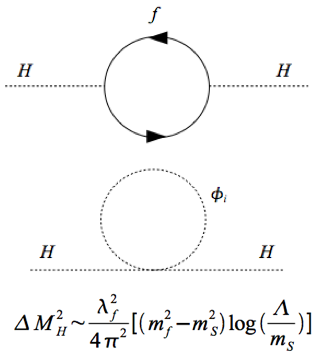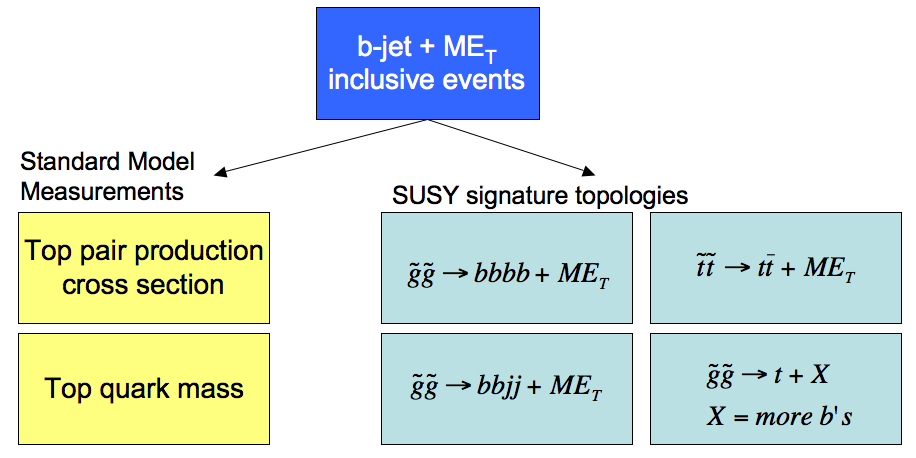Work in progress!!
b+Jet+MET topology-based physics signatures
| Section | ||||||||||
|---|---|---|---|---|---|---|---|---|---|---|
|
...
|
...
|
The requirement of b-jets in events with large MET missing ET and multi-jets is well motivated both theoretically and experimentally:
- QCD, and W/ZWZ+(light quark) jets backgrounds are significantly reduced.
...
- Top background is irreducible, but b-tagging provides additional handles to control and measure it.
- Reducing non-top SM backgrounds by requiring b-tags could be one of the keys to the early discovery of SUSY at the LHC.
- In many scenarios, where the third-generation of squarks are expected to be light, most new physics events will contain two or four b- or t-quarks.
- Even if SUSY is first discovered in inclusive jet + MET or lepton events, understanding the production of third-generation squarks will be critical to answer important physics questions.
- Is new physics related to Dark Matter? since b-tags reduce the QCD multi-jet background, looser MET cuts can open up the possibility to study the shape of the MET, to determine if the missing energy originates from a massive object.
- Quadratic divergences in the top sector: third-generation squarks (stops, sbottoms) are responsible for the largest quantum corrections that stabilize the weak scale. b-tagging can help determine the mass scale for third-generation partners.
- Origin of the electroweak symmetry breaking: if third-generation partners are light, higgs particles can be produced in decay chains starting with stops and sbottoms, as well as in gluino decays. A light Higgs could be first discovered in this channel.
Signature The b+MET signature is almost unexplored in ATLAS: b-tag and missing ET are among the most challenging and complex techniques. Expertise in multiple areas is required. Matches , which matches well SLAC strengths.
Experimental challenges:
...

